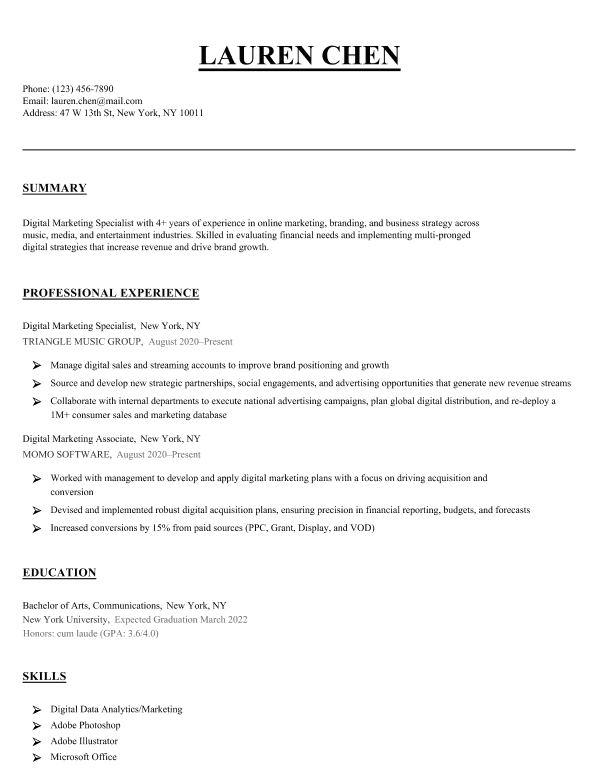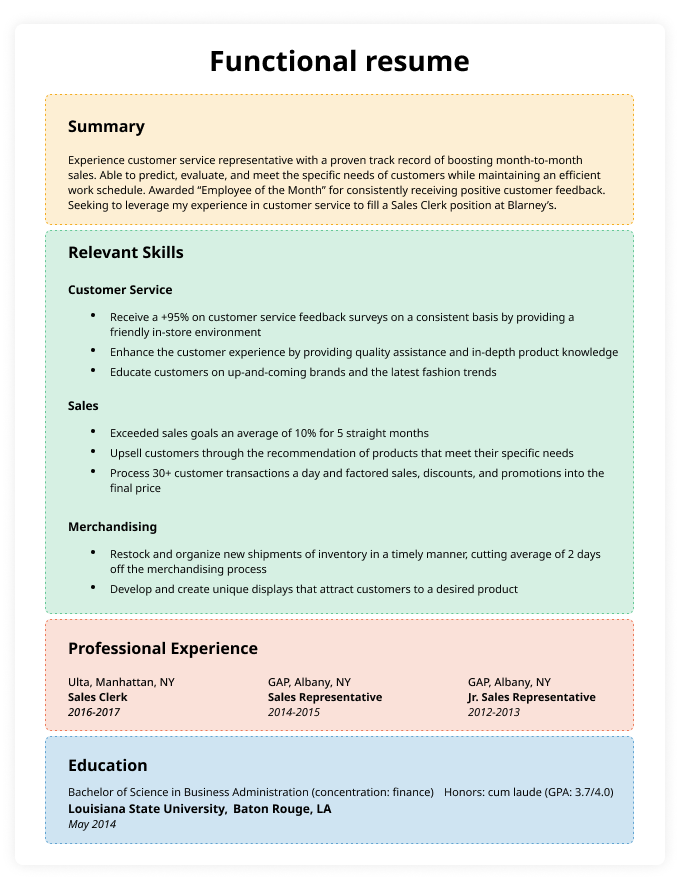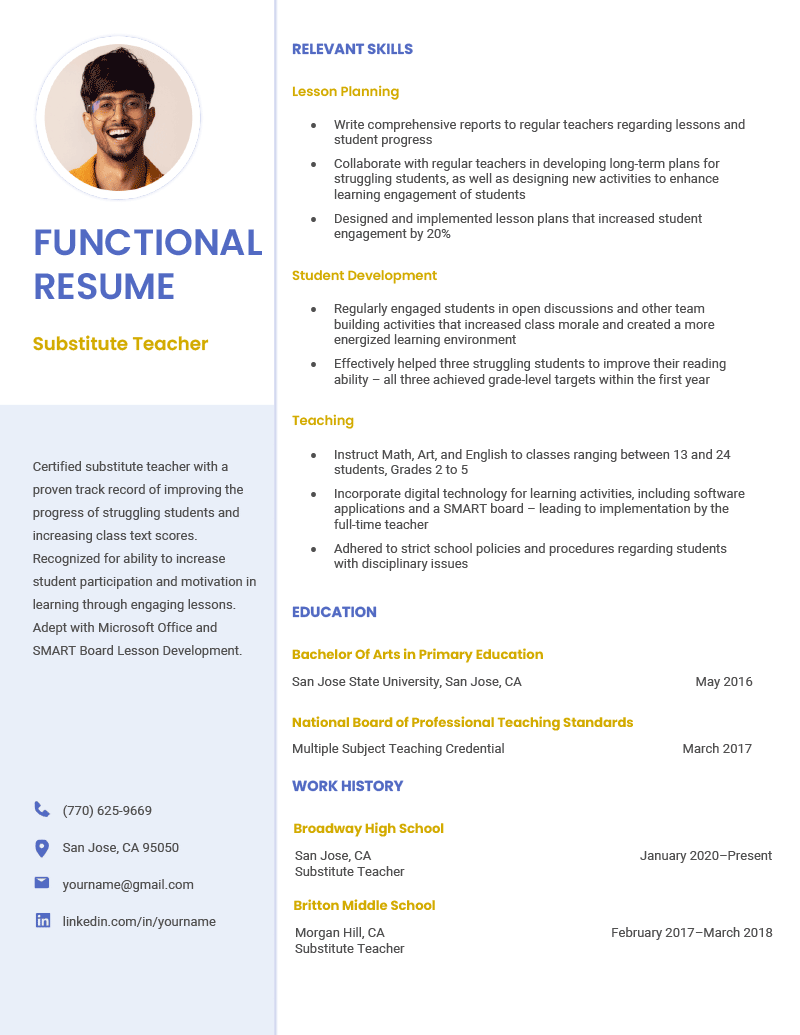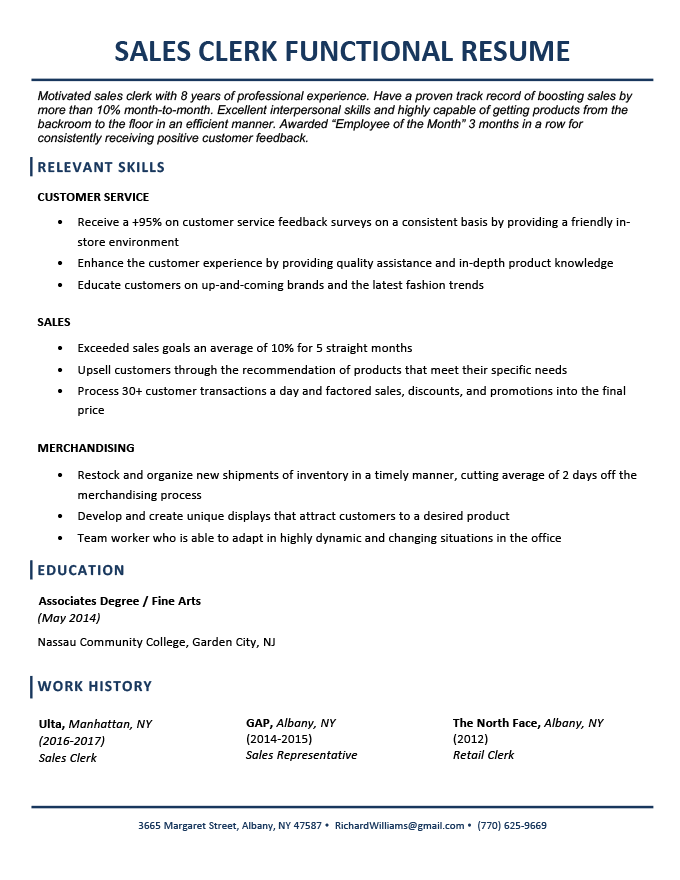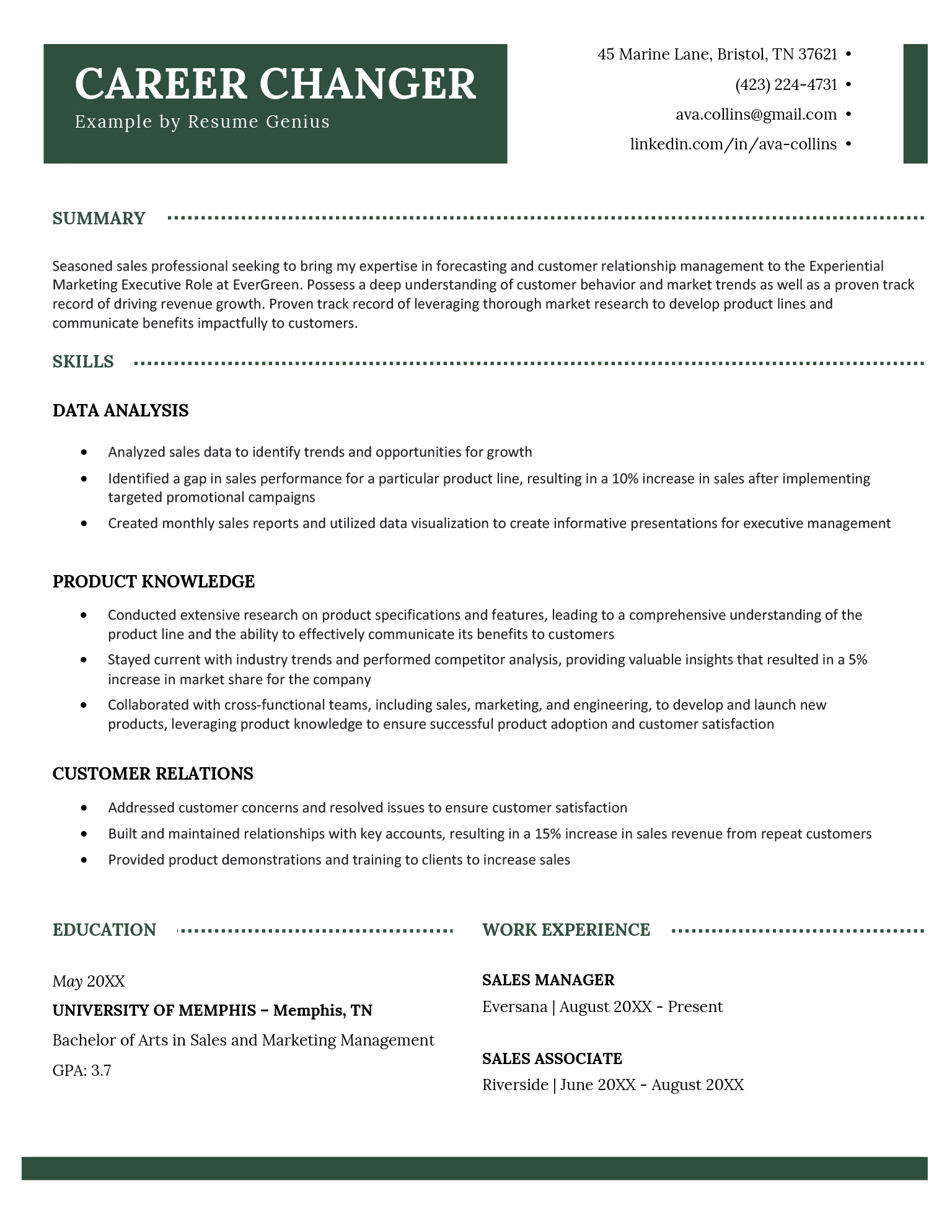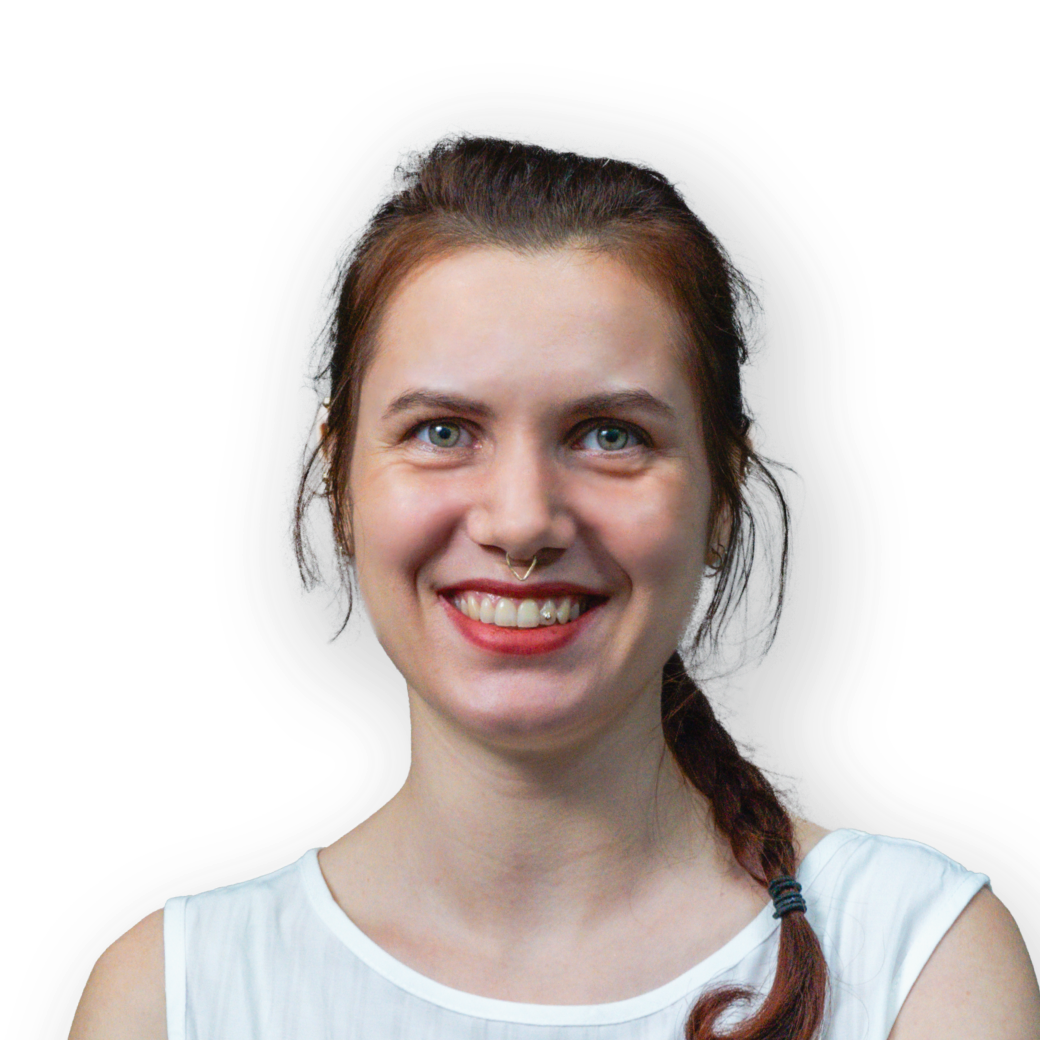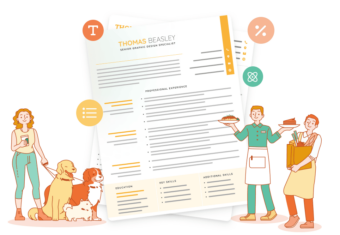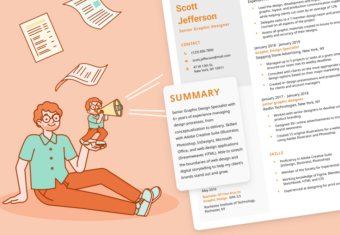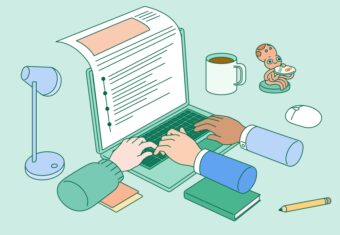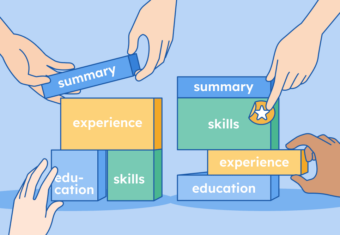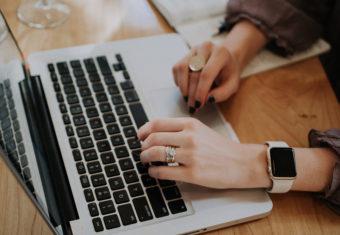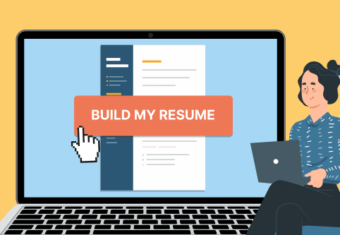Looking to emphasize your skills rather than your career progression? The functional resume format is the ideal choice for you. If you’re a career changer, a job seeker with employment gaps, or someone with a highly developed skill set, the functional resume format gives you the best chance to impress hiring managers.
In this article, we’ll teach you what the definition of a functional resume is and how to write one. Let’s get started:
Our free-to-use resume builder can make you a resume in as little as 5 minutes. Just pick the template you want, and our software will format everything for you.
What is a functional resume?
A functional resume is a common resume format that focuses broadly on your professional skills, rather than each job you held and when you held that job. It’s sometimes referred to as a skills-based resume.
The biggest difference between a functional resume and the standard chronological resume is that a functional resume groups your experience under skill categories instead of job titles. Under each skill category, bullet points are used to highlight examples of your skills, and those examples can come from both work and life experiences.
Here’s what a functional resume looks like:
Functional resume format
Should I use a functional resume?
Yes, you should use a functional resume in the following situations:
- You have long periods of unemployment.
- You’re switching to a new industry. In particular, you’re leaving the industry where you’ve built up most of your work experience.
- You want to highlight specific professional skills rather than your experience.
If one of these statements applies to you, a functional resume will draw attention to your greatest strengths and away from areas of your professional background that you’d rather not highlight.
However, for the majority of job seekers, a chronological resume is the way to go. Even if you’re a recent graduate with no work experience, you can make a traditional resume work for you by listing other relevant experience (such as volunteer work or student government positions) in reverse-chronological order.
Functional resume template and examples for Word and Google Docs
Here’s a functional resume template that you can copy and paste into Google Docs or Microsoft Word and fill in with your own information:
Functional resume template
1. Resume Heading
FIRST AND LAST NAME
Email: youremail@gmail.com | Phone: 895 555 555 | Address: 4397 Aaron Smith Drive Harrisburg, PA 17101 | Linkedin: linkedin.com/in/yourprofile
2. Resume Summary
Skilled [industry] professional with [# of years] years of experience. Seeking to leverage my expertise in [relevant skills] to fill your [position name] position. An intuitive worker aiming to help achieve [Company’s Name]’s goals and take on more responsibility as quickly as possible.
3. Relevant Skills
First Skill
- Include a bulleted list of accomplishments related to this skill
- Make sure you quantify (add numbers to) these bullet points
Second Skill
- List any accomplishments or responsibilities that demonstrate this skill
- Assuming you no longer perform a task, make sure you use past tense verbs to describe the experience
- Be as specific as possible. Mention the actual names of software or tools you’ve used
4. Work History
Most Recent Job Title
Employer Name / Location / Start Year – End Year
Earlier Job Title
Employer Name / Location / Start Year – End Year
5. Education
Degree Name / Major
University, Location | Start Date – End Date
6. Additional Resume Section
- Here’s where you can add any other relevant information
- For example, this section could be for any of the following: publications, languages, volunteer experience, or relevant hobbies
Not sure what your functional resume should look like? Choose a functional resume sample below to download and use as a reference when writing your own:
Functional resume example 1: substitute teacher
Substitute Teacher Resume (Text Format)
SUMMARY
Certified substitute teacher with a proven track record of improving the progress of struggling students and increasing class text scores. Recognized for ability to increase student participation and motivation in learning through engaging lessons. Adept with Microsoft Office and SMART Board Lesson Development.
RELEVANT SKILLS
LESSON PLANNING
- Write comprehensive reports to regular teachers regarding lessons and student progress
- Collaborate with regular teachers in developing long-term plans for struggling students, as well as designing new activities to enhance learning engagement of students
- Designed and implemented lesson plans that increased student engagement by 47%
STUDENT DEVELOPMENT
- Regularly engaged students in open discussions and other team building activities that increased class morale and created a more energized learning environment
- Effectively helped three struggling students to improve their reading ability — all three achieved grade-level targets within the first year
TEACHING
- Instruct Math, Art, and English to classes ranging between 13 and 24 students, Grades 2 to 5
- Incorporate digital technology for learning activities, including software applications and a SMART board — leading to implementation by the full-time teacher
- Adhered to strict school policies and procedures regarding students with disciplinary issues
EDUCATION
B.A. / Primary Education
San Jose State University, May 2016
National Board of Professional Teaching Standards
Multiple Subject Teaching Credential, March 2017
WORK HISTORY
Broadway High School, San Jose, CA
Substitute Teacher
January 2020 – Present
Britton Middle School, Morgan Hill, CA
Substitute Teacher
February 2017 – March 2018
This example contains a large skills section with quantified bullet points that emphasize the applicant’s top teaching-related skills.
It also lists a teaching credential in the education section, showing that they’re qualified for a role as a substitute teacher.
Functional resume example 2: customer service
Customer Service Resume (Text Format)
RESUME SUMMARY
- Proven track record of boosting month-to-month sales figures by +10%
- Strong customer service skills: Predict, evaluate, and meet the specific needs of customers
- Interpersonal skills: Expert at getting product from the backroom to the floor in a cost-effective and timely manner
- Awarded “Employee of the Month” for consistently receiving positive customer feedback
RELEVANT SKILLS
CUSTOMER SERVICE
- Receive a +95% on customer service feedback surveys on a consistent basis by providing a friendly in-store environment
- Enhance the customer experience by providing quality assistance and in-depth product knowledge
- Educate customers on up-and-coming brands and the latest fashion trends
SALES
- Exceeded sales goals an average of 10% for 5 straight months
- Upsell customers through the recommendation of products that meet their specific needs
- Process 30+ customer transactions a day and factored sales, discounts, and promotions into the final price
MERCHANDISING
- Restock and organize new shipments of inventory in a timely manner, cutting average of 2 days off the merchandising process
- Develop and create unique displays that attract customers to a desired product
- Team worker who is able to adapt in highly dynamic and changing situations in the office
WORK HISTORY
Ulta, Manhattan, NY
(2016–2017)
Sales Clerk
GAP, Albany, NY
(2014–2015)
Sales Representative
The North Face, Albany, NY
(2012)
Retail Clerk
EDUCATION
Associates Degree/Fine Arts
Nassau Community College, Garden City, NY
The functional resume sample above only contains the years, not dates, of employment. If you have employment gaps, this can be an effective way to make those gaps appear less significant.
Functional resume example 3: career changer
Career Changer Resume (Text Format)
RESUME SUMMARY
Seasoned sales professional with 5+ years of experience in sales forecasting, market research, and customer relationship management. Possess a deep understanding of customer behavior and market trends as well as a proven track record of driving revenue growth. Seeking to transition into a marketing role and leverage my ability to translate market insights and turn them into impactful marketing strategies.
RELEVANT SKILLS
DATA ANALYSIS
- Analyzed sales data to identify trends and opportunities for growth
- Identified a gap in sales performance for a particular product line, resulting in a 10% increase in sales after implementing targeted promotional campaigns
- Created monthly sales reports and utilized data visualization to create informative presentations for executive management
PRODUCT KNOWLEDGE
- Conducted extensive research on product specifications and features, leading to a comprehensive understanding of the product line and the ability to effectively communicate its benefits to customers
- Stayed current with industry trends and performed competitor analysis, providing valuable insights that resulted in a 5% increase in market share for the company
- Collaborated with cross-functional teams, including sales, marketing, and engineering, to develop and launch new products, leveraging product knowledge to ensure successful product adoption and customer satisfaction
CUSTOMER RELATIONS
- Addressed customer concerns and resolved issues to ensure customer satisfaction
- Built and maintained relationships with key accounts, resulting in a 15% increase in sales revenue from repeat customers
- Provided product demonstrations and training to clients to increase sales
WORK HISTORY
Eversana | August 2021 – Present
Sales Manager
Riverside | June 2017 – August 2020
Sales Associate
EDUCATION
May 2017
University of Memphis – Memphis, TN
Bachelor of Arts in Sales and Marketing Management
GPA: 3.7
This functional resume for a sales professional seeking to transition into marketing highlights transferable skills that will appeal to hiring managers in a variety of industries.
How to write a functional resume
Now that you have an idea of what a functional resume looks like, it’s time to learn how to write a resume like this. Here’s a helpful section-by-section guide:
1. List your contact information
Include the following contact information on your resume:
- Your first and last names
- Current job title
- Phone number
- Email address
Your name should be the largest text on the page, and typed out in a professional resume font.
If you have a LinkedIn profile or personal website related to the job you’re applying for, add it in this section.
Note that you don’t need to include your address on your resume, because recruiters can contact you over the phone or by email. However, you might want to list your address if you already live near the company to show employers you won’t need to relocate if hired.
2. Write a detailed resume introduction
If you’ve been out of a job for chunks of time, a convincing resume summary is the best way to start your resume.
A resume summary provides hiring managers an insight into your professional background and skills. It allows you to list 2-3 examples of your most relevant achievements and responsibilities at the top of your resume, either in a bulleted list or paragraph format.
The best way to make a resume summary is by doing some research and writing it yourself or by using a resume summary generator to do the work for you.
Here’s an example of a strong resume summary in paragraph form:
Conscientious administrative assistant with 4+ years of experience providing executive-level support. Introduced inventory supply software and saved 5% in costs. Highly proficient with QuickBooks.
Additionally, check the job description to find resume keywords that you can sprinkle into your resume summary.
Adding keywords to your functional resume makes it more likely employers will notice your application and help ensure you make it to the next stage of the application process.
3. Group your skills by type
If you use a functional resume format, the skills on your resume are more emphasized than your work history.
Typically the skills section of a functional resume is about the same size as the work experience section of a chronological resume.
When writing the resume skills section on your functional resume, choose at least three skills that are highly applicable to the job you’re applying for. For each skill, add 3 or 4 bullet-point examples that prove you have that skill.
Then you should add numbers to those bullet points to give employers confidence you can fulfill the job requirements and deliver concrete results. These numbers could be anything that you impacted through your work, whether that’s dollar amounts, percentages, numbers of people, or time saved.
Include at least one bullet point with numbers for each skill to catch the hiring manager’s attention.
Here’s an example of what a functional resume with hard numbers looks like:
CUSTOMER SERVICE
- Receive a +95% on customer service feedback surveys on a consistent basis by providing a friendly in-store environment
- Enhance the customer experience by providing quality assistance and in-depth product knowledge
- Educate customers on up-and-coming brands and the latest fashion trends
SALES
- Exceeded sales goals an average of 10% for 5 straight months
- Upsell customers through the recommendation of products that meet their specific needs
- Process 30+ customer transactions a day and factored sales, discounts, and promotions into the final price
MERCHANDISING
- Restock and organize new shipments of inventory in a timely manner, cutting average of 2 days off the merchandising process
- Develop and create unique displays that attract customers to a desired product
- Team worker who is able to adapt in highly dynamic and changing situations in the office
4. Write your employment history
The work history section of a functional resume is short. You only need to list the names of the companies you worked for, as well as each job title.
You don’t have to list your previous jobs in a specific order either, because adding employment dates for those jobs is optional.
Ultimately, the goal of writing a functional resume is to downplay your chronological work history as much as possible, and your professional experience section should reflect that.
Here’s an example of an effective work history section on a functional resume:
Ulta, Manhattan, NY
(2016-2017)
Sales Clerk
GAP, Albany, NY
(2014-2015)
Sales Representative
The North Face, Albany, NY
(2012)
Retail Clerk
If you’re an experienced candidate in your field and you want to write a resume that equally emphasizes both your skills and work experience, then writing a combination resume is your best choice.
5. List your relevant educational background
Unless your resume’s education section directly relates to the job you’re applying for, only include the name of your university or organization, the city and state, the degree you received, and your GPA (if it’s above 3.5).
Here’s an example of how to list your educational background on a functional resume:
B.A./ Primary Education
San Jose State University, May 2012
National Board of Professional Teaching Standards
Multiple Subject Teaching Credential, March 2013
6. Highlight your professional accomplishments
If you have an award or honor related to your target position, add it to your functional resume.
Earning an award shows you’ve stood out among your peers, proving you’ll be a valuable addition to a workplace.
If you have numerous accomplishments, you should list them in a separate awards section on your resume. Otherwise, you can mention them in your summary or skills bullet points.
7. Include additional sections (optional)
Entering a new field? Make up for your lack of relevant work experience by showing employers that you’ve been proactive in developing the skills necessary to succeed in your new industry. Include a separate section for certifications you’ve acquired or training you’ve undergone that makes you qualified for the job.
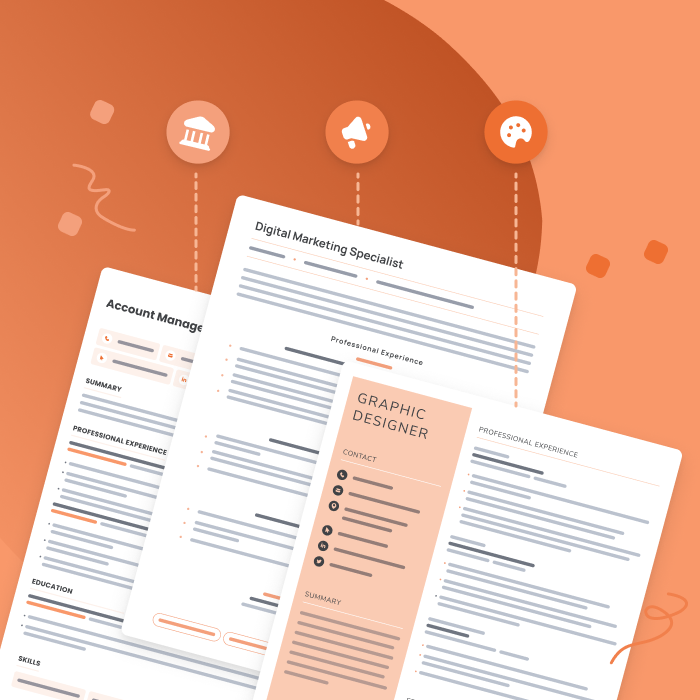
Resume examples for different industries
Not sure what your resume should look like? The best way to learn is by taking inspiration from resume examples written by other candidates in your industry.
Or, if you’re going back to work after a long break, showcase projects you’ve been working on while unemployed.
By adding these sections to your resume, you demonstrate initiative and commitment to your professional development.
Click to rate this article
4.9 Average rating




